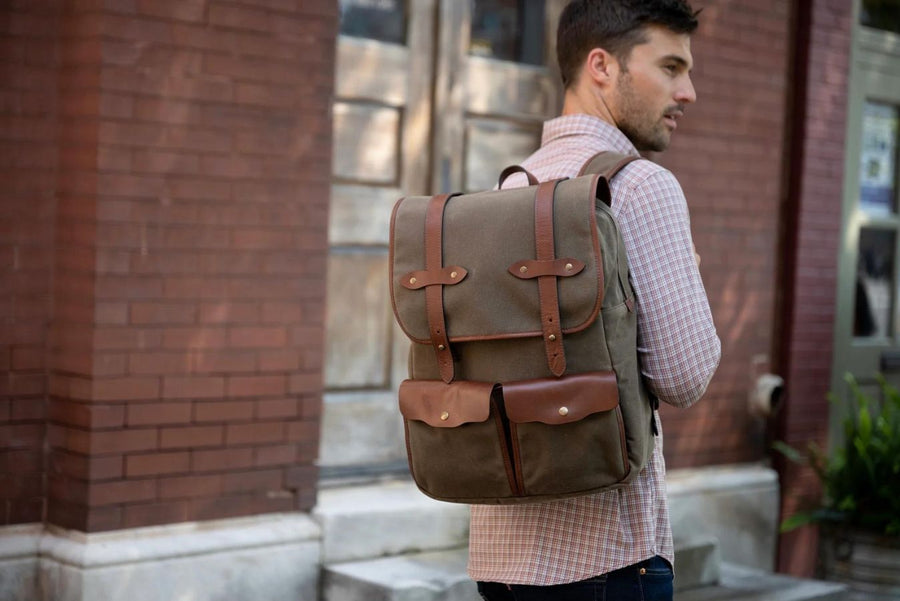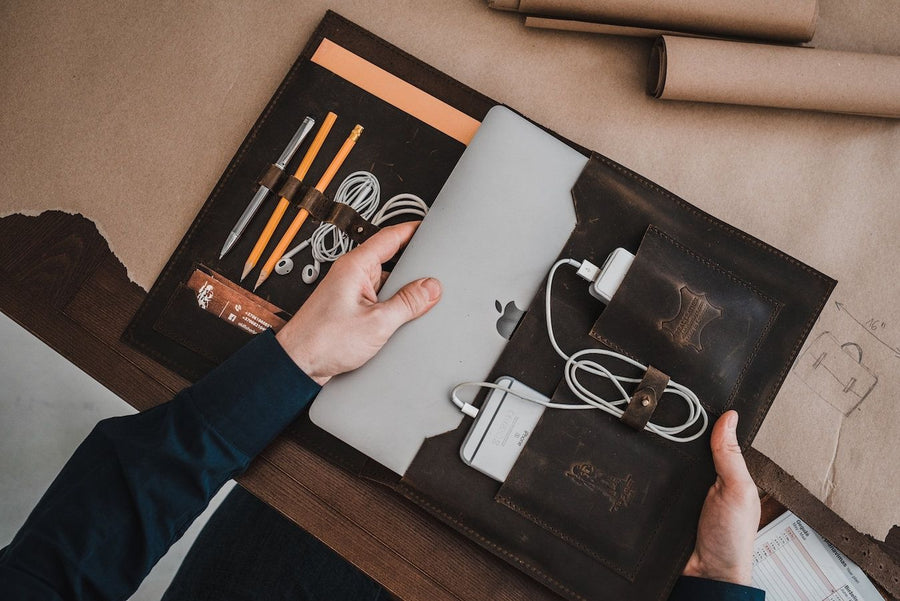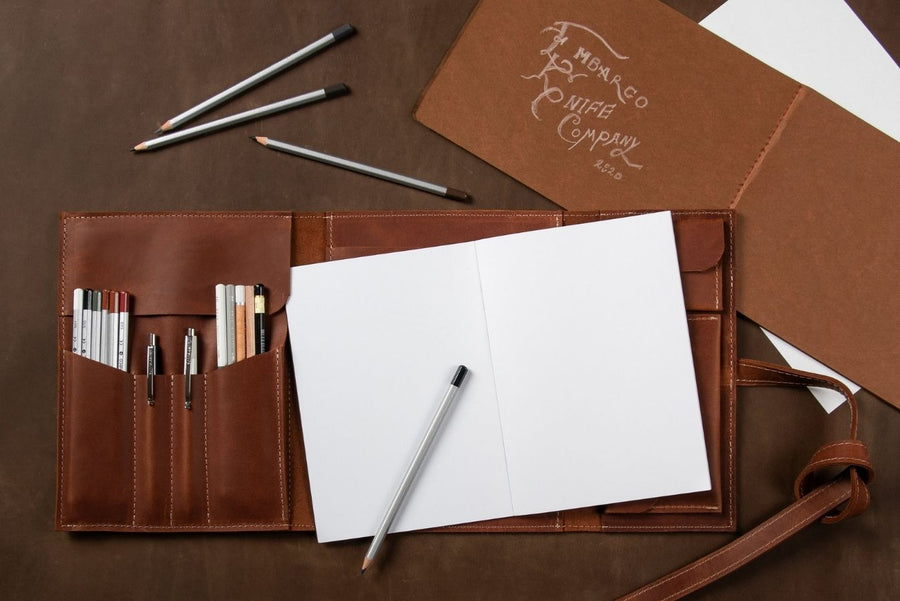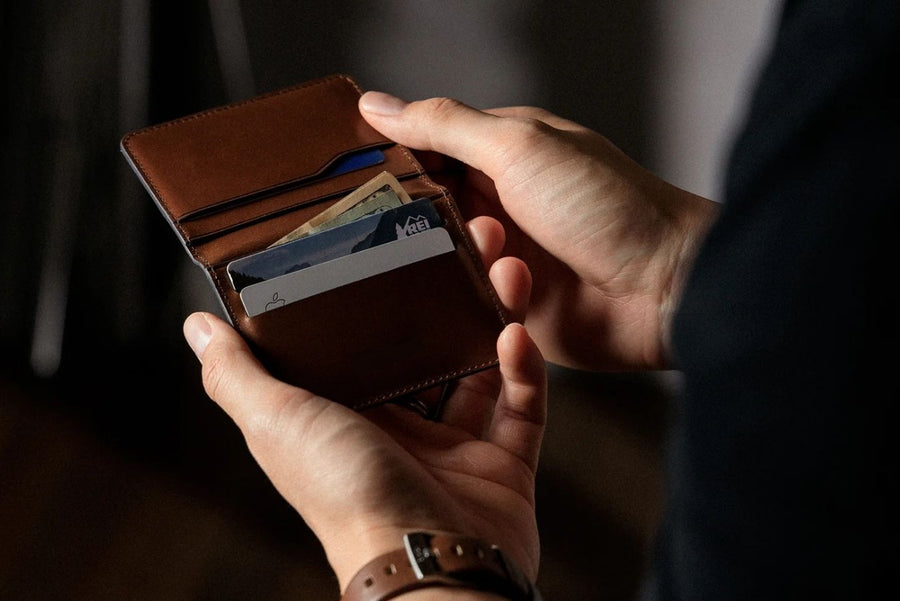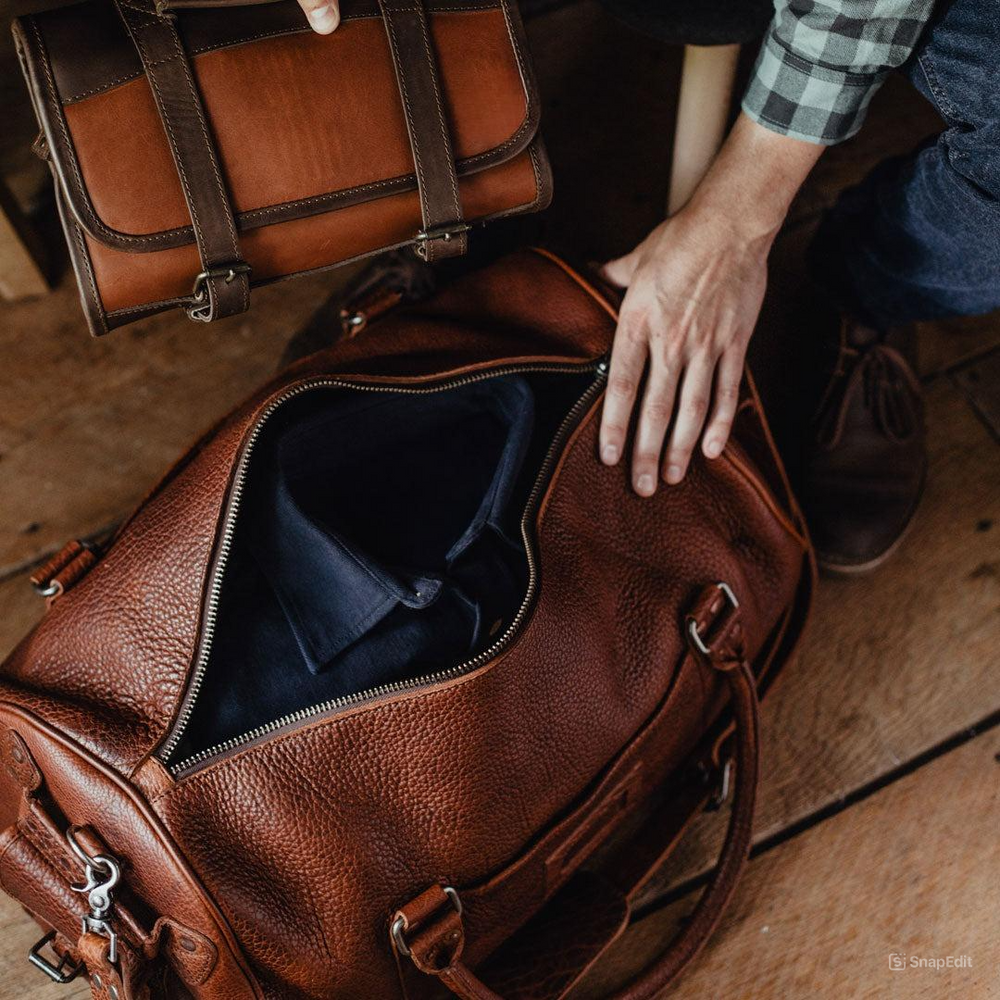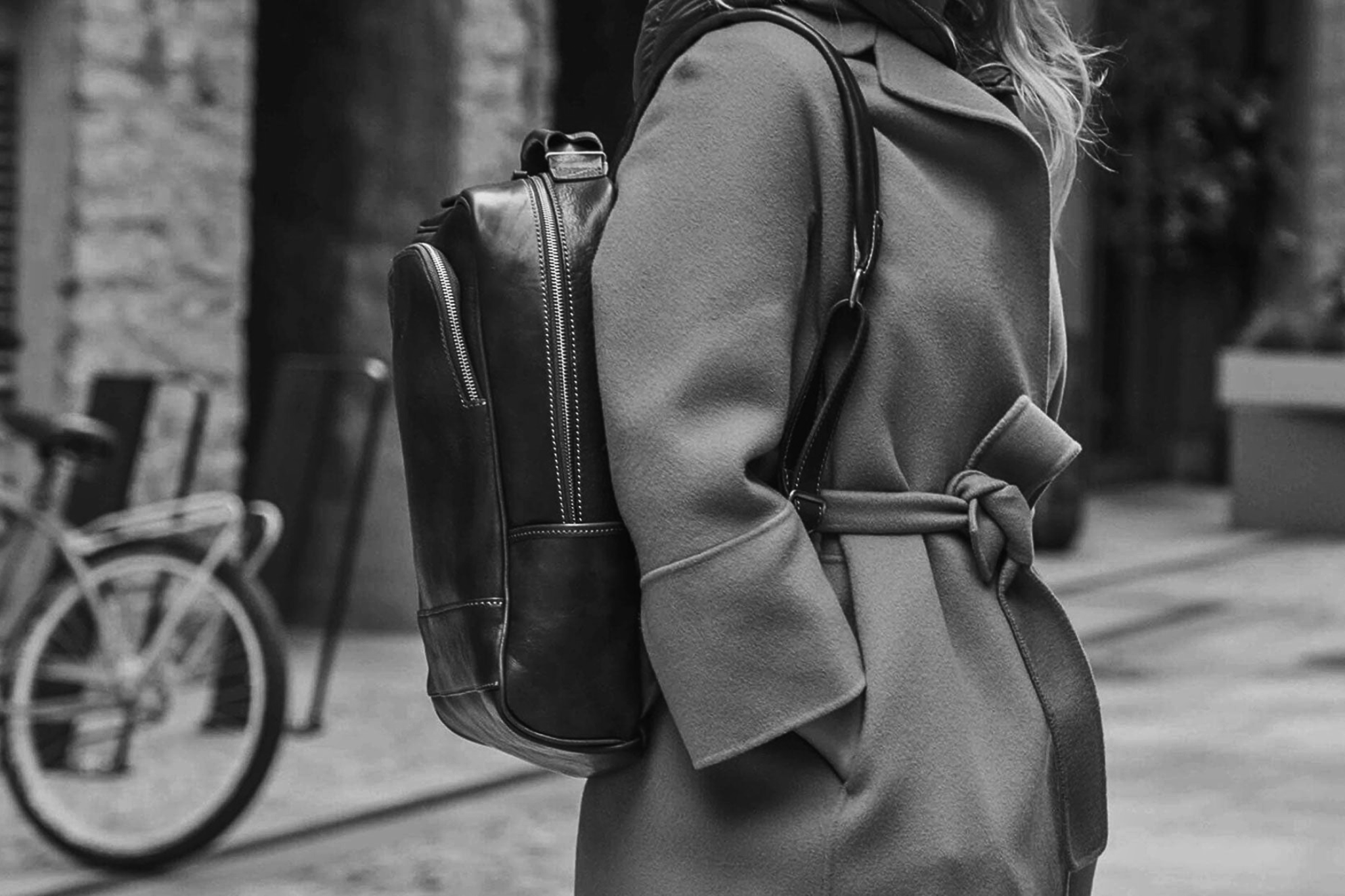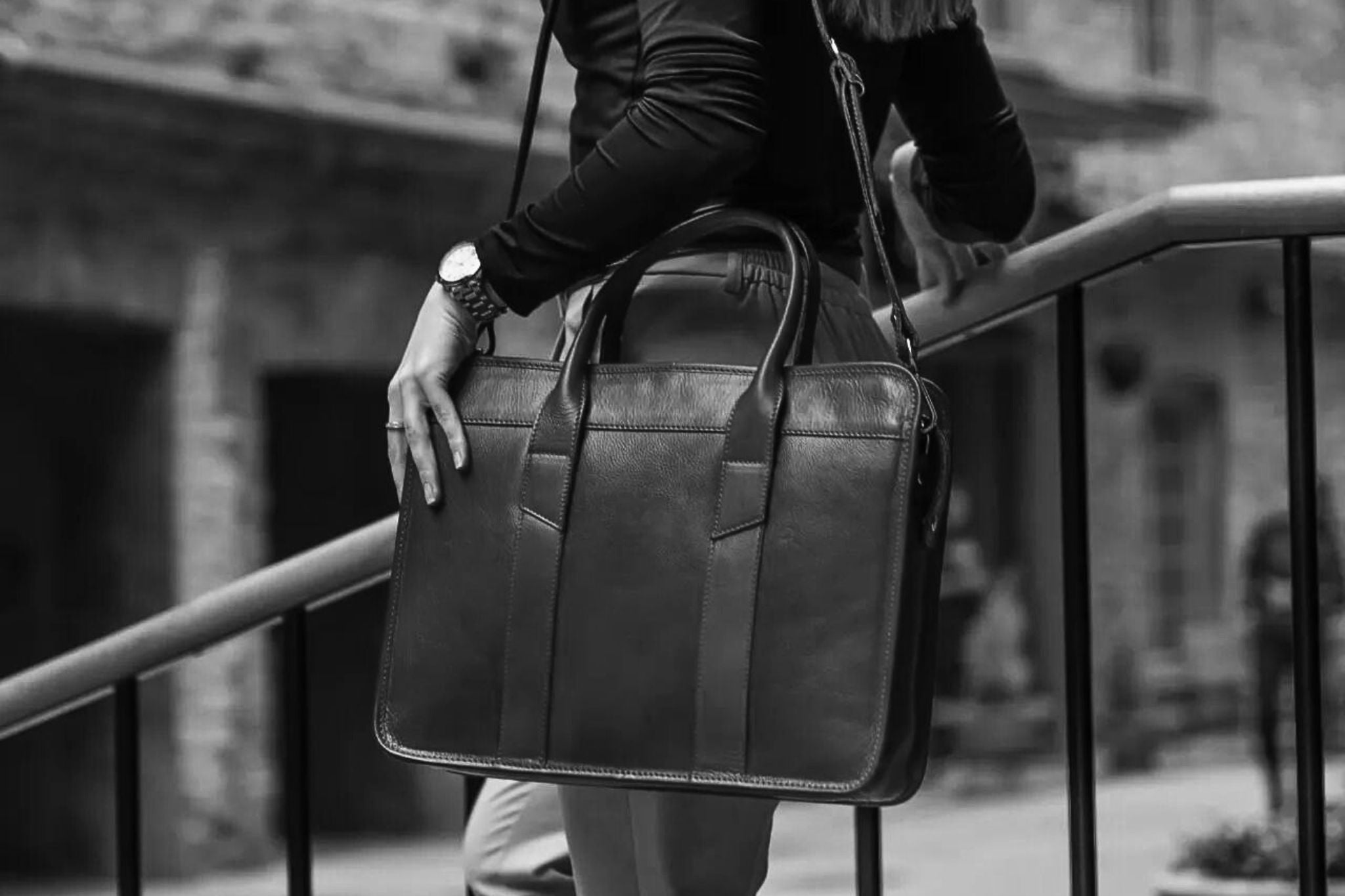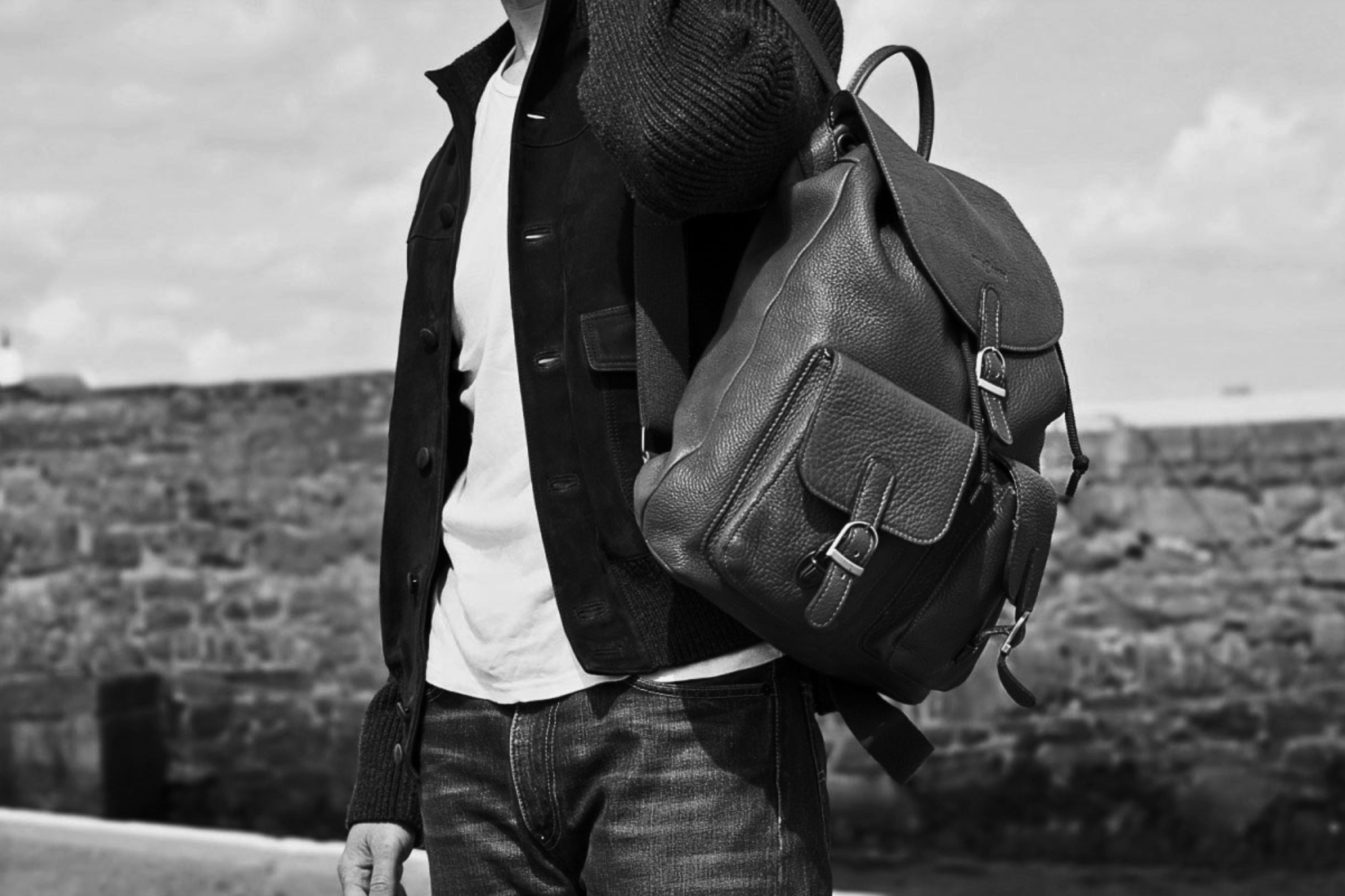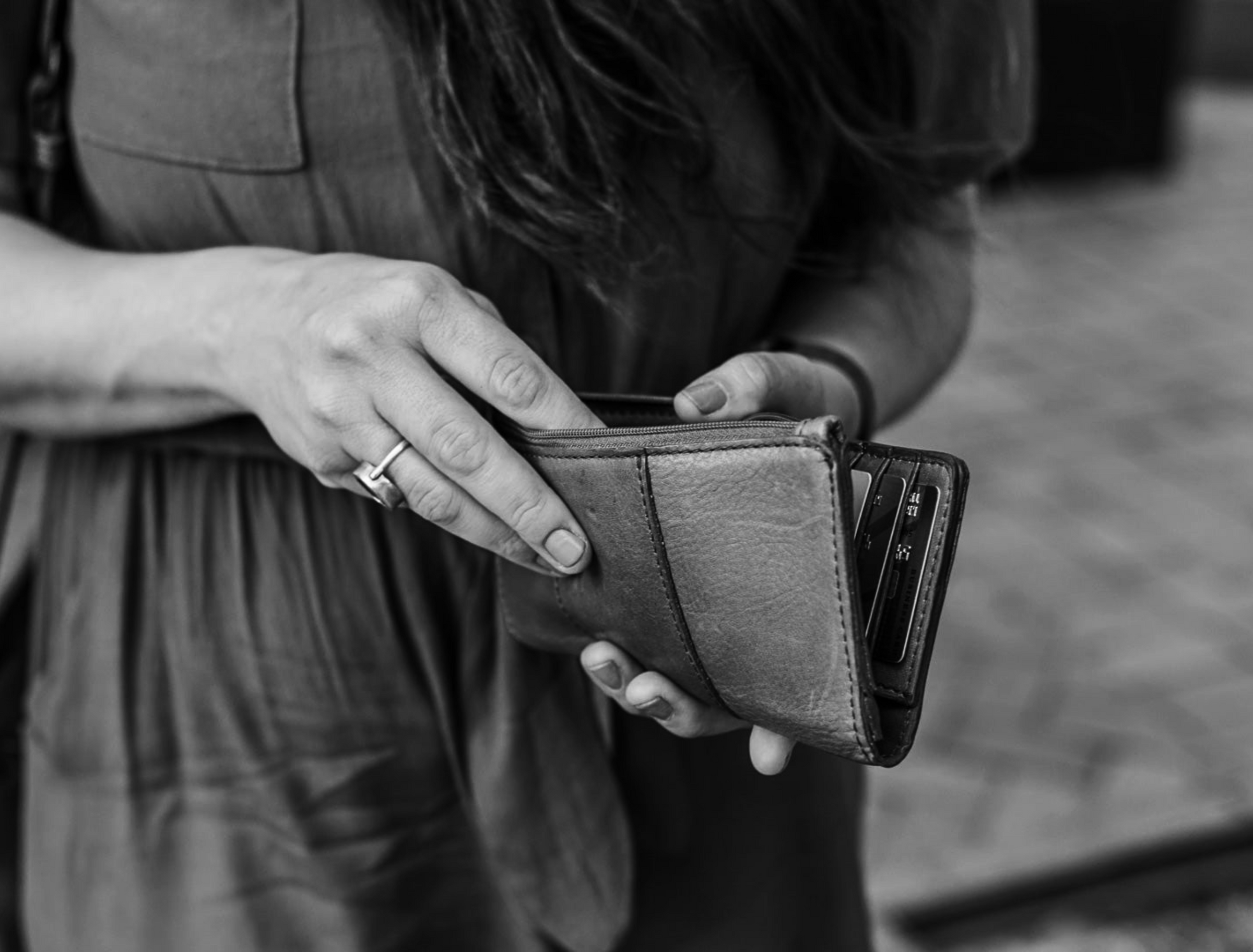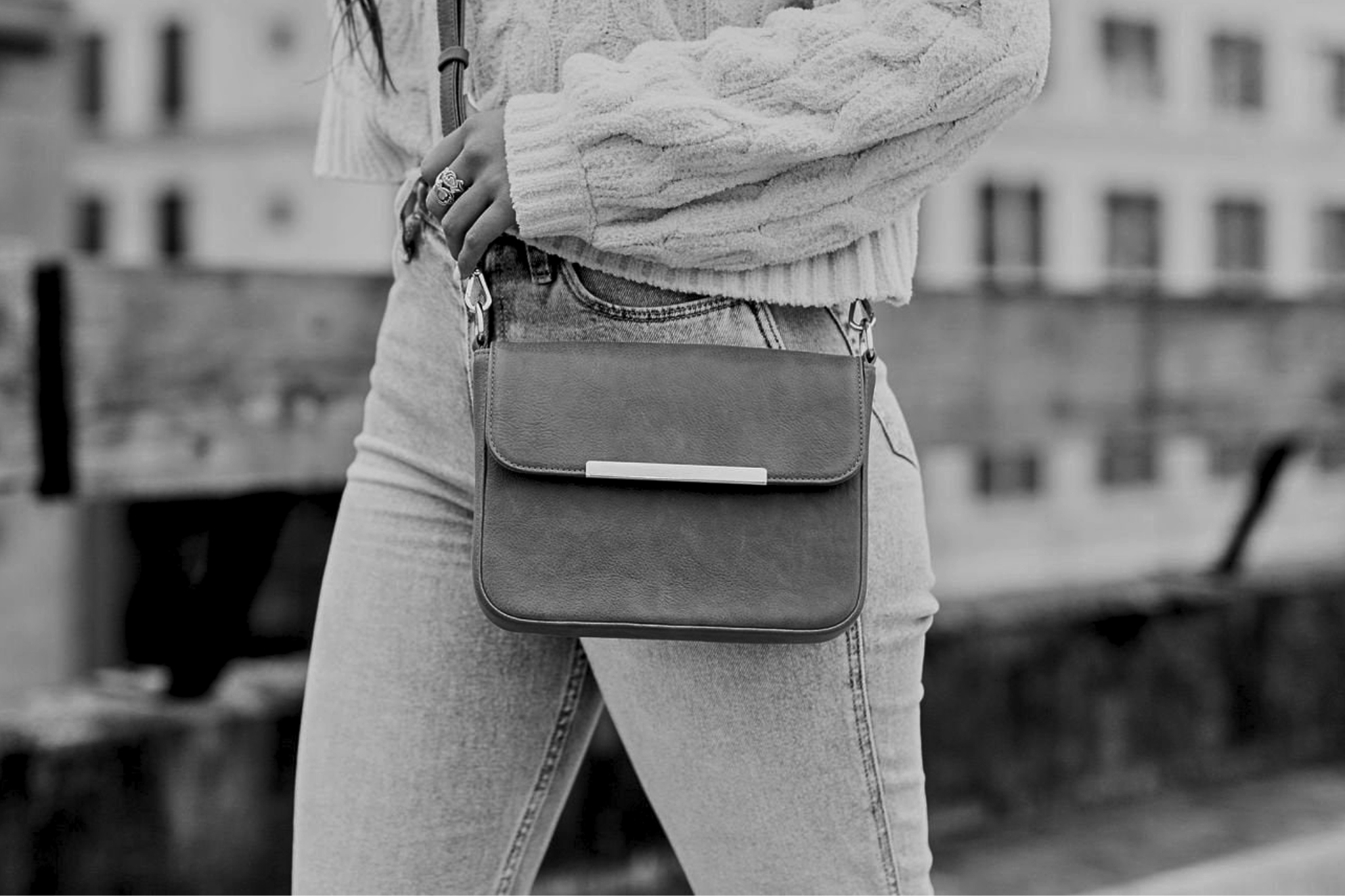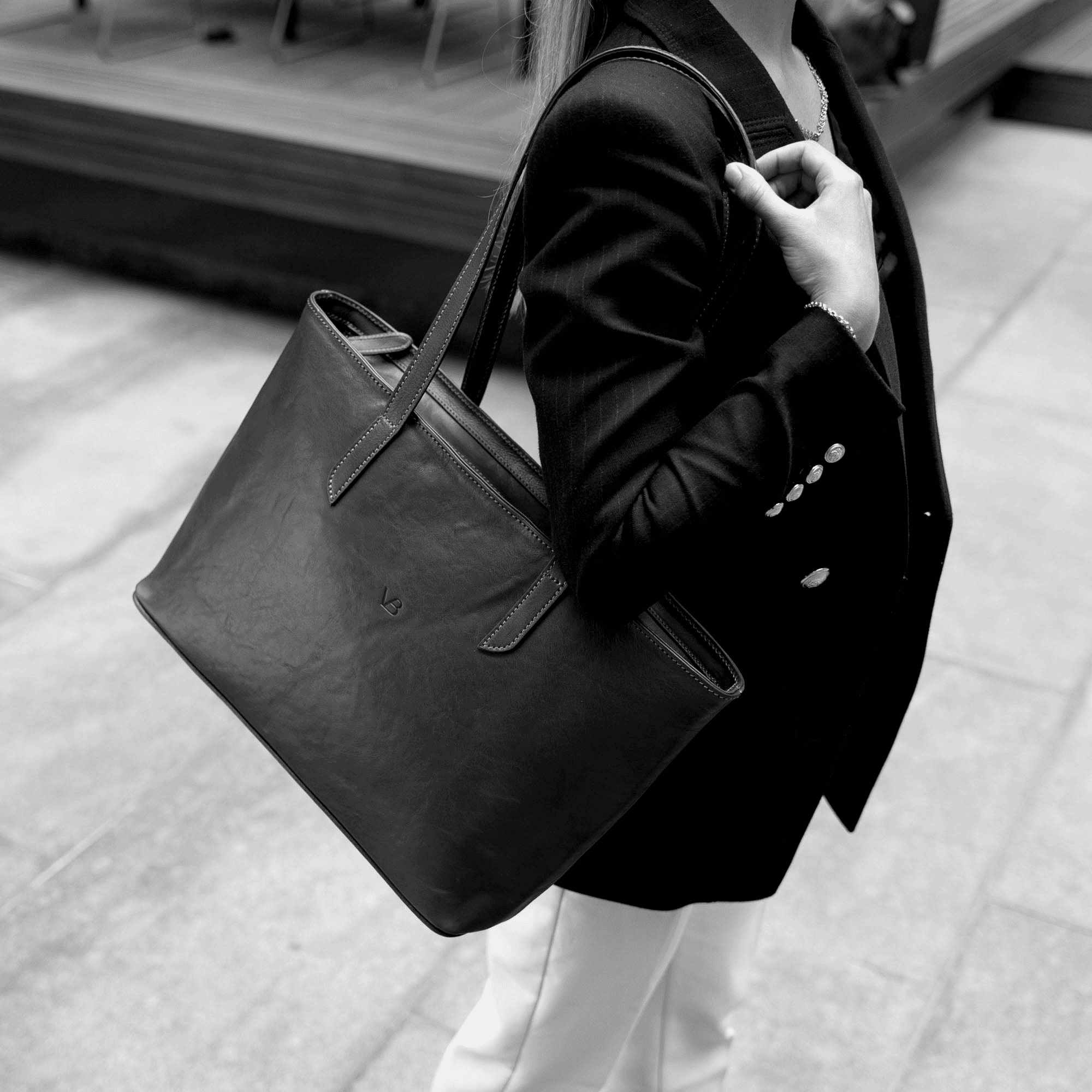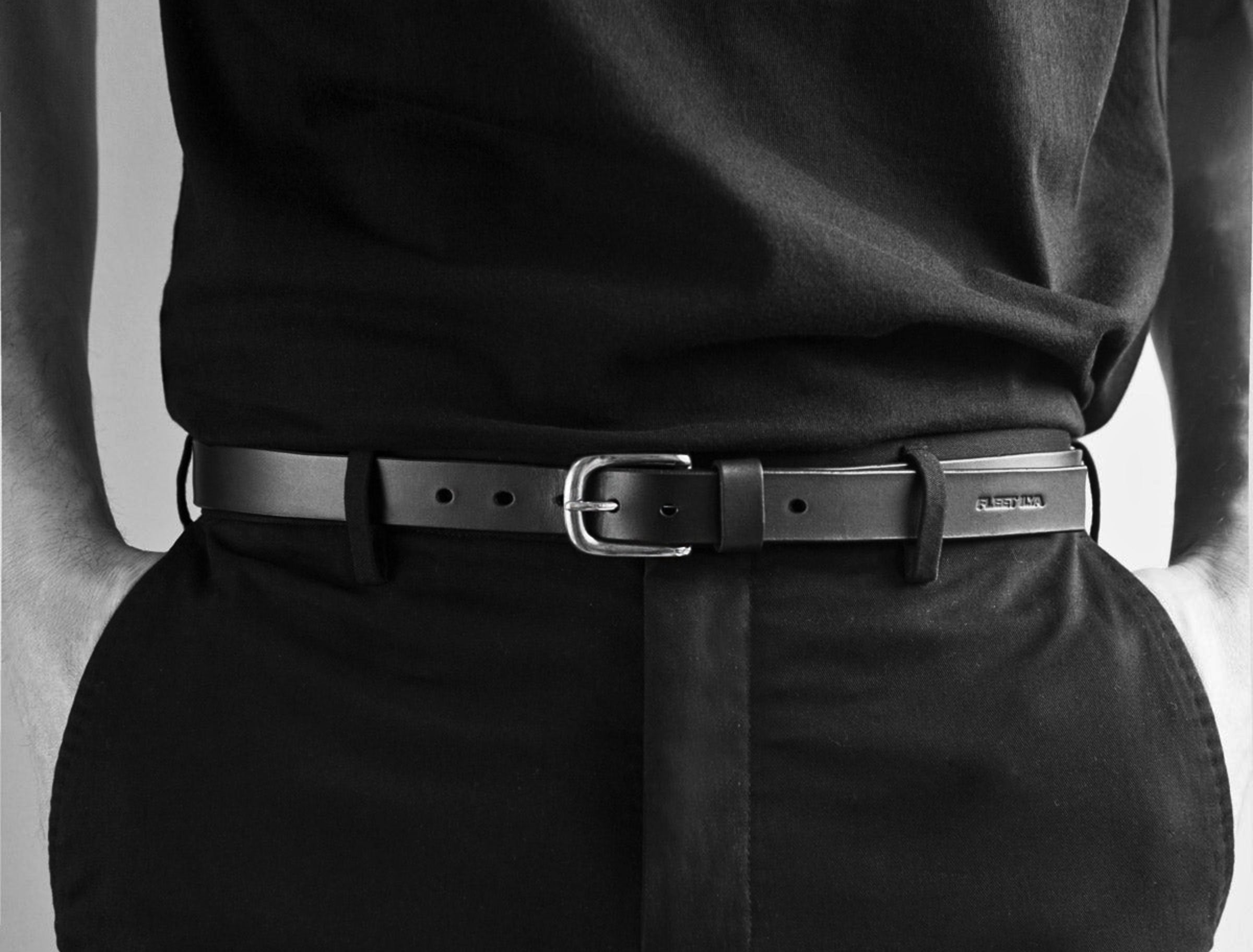The history and evolution of the iconic women's leather tote bag
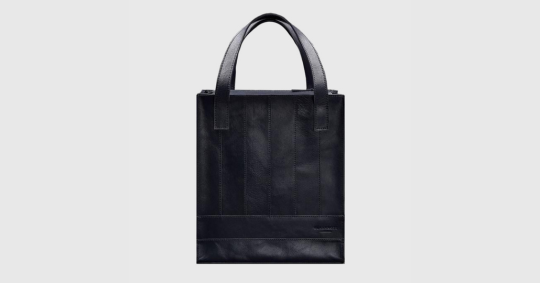
In the ever-evolving world of fashion and utility, one accessory stands out as both a stylish statement and a functional essential – the tote bag. In this comprehensive exploration, we delve deep into the world of tote bags, their definition, significance, and their ever-evolving purpose. Join us on this journey as we uncover the nuances of this versatile accessory and how it has carved a niche for itself in the modern lifestyle.
The history and evolution of the iconic women's leather tote bag
Introduction
Definition and significance
The tote bag: a versatile marvel
The tote bag, often simply referred to as a "tote," is a ubiquitous item in today's society. Its design is marked by a pair of sturdy handles and an open-top, making it an ideal choice for carrying a wide array of items. This minimalist design feature, coupled with its spaciousness, renders tote bags highly versatile, serving as a canvas for personal style and a functional carry-all.
Originating the term "tote"
The term "tote" itself has an interesting history. It finds its roots in West African languages, where "tota" or "toto" means "to carry." This etymology reflects the primary purpose of tote bags – to carry belongings with ease. Originally, tote bags were simple, utilitarian bags made from sturdy materials like canvas or burlap. They were designed to withstand heavy loads and frequent use, making them indispensable for daily tasks.
Significance in modern culture
Tote bags have transcended their humble beginnings and emerged as a symbol of practicality and style. They are no longer limited to being plain and functional; today, tote bags come in a myriad of designs, materials, and sizes, catering to a diverse range of tastes and needs.
Environmental consciousness: One of the defining aspects of contemporary tote bags is their eco-friendliness. With the growing concern for environmental conservation, reusable tote bags have become a sustainable alternative to single-use plastic bags. Many individuals and businesses now use tote bags to reduce their carbon footprint.
Fashion statement: Tote bags are not just utilitarian; they are also a fashion statement. High-end brands and designers have embraced the tote bag, incorporating luxurious materials and intricate designs. Tote bags have graced runways, red carpets, and everyday street fashion, establishing themselves as a must-have accessory.
Customization: Personalization is a key aspect of tote bags. Individuals can express their individuality by choosing tote bags with unique prints, slogans, or customized designs. This personal touch makes tote bags an extension of one's personality.
Purpose of the tote bag
Versatility in use
The enduring popularity of tote bags can be attributed to their versatility. Their open-top design and spacious interiors make them ideal for a wide range of activities and occasions. Let's explore some of the common purposes these adaptable bags serve:
Grocery shopping: Tote bags are eco-conscious shoppers' best friends. They provide a sturdy and reusable alternative to disposable plastic bags, making them an eco-friendly choice for grocery runs.
Beach companion: When it's time for a day at the beach, tote bags are the perfect companions. They can carry towels, sunscreen, snacks, and even beach reads, all while keeping your essentials sand-free.
Work and commute: Many professionals opt for tote bags as stylish work accessories. They can accommodate laptops, documents, and personal items, ensuring you carry everything you need in one fashionable package.
Travel buddy: Tote bags also make excellent travel companions. Their roomy interiors are perfect for stowing away travel essentials, from passports and snacks to travel guides and souvenirs.
Fashion accessory: Tote bags serve as fashion-forward accessories. Whether you're heading to a coffee shop, a bookstore, or a casual meet-up, a well-chosen tote bag can enhance your outfit and elevate your style.
Preview of evolution
The ever-evolving tote bag
The tote bag has not remained stagnant; it has evolved to cater to modern needs and preferences. This evolution can be observed in various aspects:
Materials: While traditional tote bags were primarily made from canvas or burlap, contemporary options include leather, faux leather, nylon, and even sustainable materials like recycled plastic.
Designs: Tote bags come in a vast array of designs, ranging from minimalist and monochromatic to bold and vibrant. Some feature intricate patterns, while others display minimalist elegance.
Size and functionality: Tote bags are now available in different sizes to cater to specific uses. Smaller totes are perfect for daily errands, while larger ones are ideal for travel or work.
Technology integration: Some modern tote bags are equipped with tech-friendly features, such as padded compartments for laptops and built-in charging ports, blending fashion with functionality seamlessly.
In conclusion, the tote bag, with its rich history, evolving significance, and versatile functionality, remains a beloved accessory in today's world. From its origins as a simple carry-all to its current status as a symbol of style and sustainability, the tote bag has come a long way. Its enduring appeal lies in its ability to adapt to the changing needs and tastes of individuals, making it a timeless accessory for all occasions.
So, whether you're heading to the office, embarking on a weekend getaway, or simply looking for a stylish way to carry your essentials, the tote bag is your reliable and fashionable companion. Embrace the versatility, eco-friendliness, and style that this accessory brings to your life.
Early origins
Historical beginnings
The fascinating journey of the tote bag takes us back to its historical beginnings, where its evolution from a humble utility item to a fashion statement began.
Simple beginnings: The tote bag's roots can be traced to the early 20th century when it emerged as a practical and straightforward means of carrying goods. Its initial purpose was purely functional, providing a convenient way to transport groceries, books, and other everyday items.
L.L. Bean's Contribution: The tote bag gained significant recognition with the introduction of the Boat Bag by L.L. Bean in 1944. This canvas bag with sturdy handles was designed for carrying ice blocks but quickly found favor among outdoor enthusiasts. It marked a turning point in the tote bag's evolution, demonstrating its versatility beyond everyday use.
Materials used
Understanding the materials used in early tote bags sheds light on their durability and utilitarian nature.
Canvas dominance: Early tote bags predominantly featured canvas as the primary material. Canvas was chosen for its durability and resistance to wear and tear, making it ideal for carrying heavy loads.
Burlap variants: In some instances, burlap was used for tote bags. While not as sturdy as canvas, burlap was readily available and served as a budget-friendly option for utilitarian bags.
Functionality in early years
The functionality of early tote bags was a defining characteristic that contributed to their popularity.
Grocery runs: Tote bags were initially popularized as a reliable companion for grocery shopping. Their open-top design allowed for easy loading and unloading of produce and other groceries, reducing the need for disposable bags.
Books and essentials: Beyond groceries, tote bags became a staple for carrying books and essentials. Students and professionals alike found them to be a convenient way to transport their belongings.
Everyday workhorse: Tote bags were the epitome of practicality. They were used for a wide range of everyday tasks, from carrying laundry to transporting picnic supplies. Their simplicity and versatility made them indispensable in daily life.
In summary, the tote bag's early origins were marked by simplicity, durability, and practicality. It started as a functional item but soon evolved into a versatile accessory. The historical beginnings of the tote bag paved the way for its transformation into the stylish and eco-conscious accessory we know today.
The 20th century revolution
Emergence of fashion
The 20th century brought about a revolution in the world of tote bags, transforming them from utilitarian carry-alls to fashion-forward accessories.
Rise of personal style: As the 20th century progressed, personal style and self-expression became increasingly important. Tote bags, with their simple yet versatile design, became a canvas for individuals to showcase their unique tastes and preferences. They were no longer just functional; they were a statement of one's fashion sensibility.
Designer adaptation: High-end fashion designers recognized the potential of tote bags as fashion accessories. They began incorporating luxurious materials, intricate detailing, and distinctive designs into their tote bag collections. This elevated the status of tote bags, making them coveted items in the fashion world.
Runway to street: Tote bags made their way from the fashion runways to the streets. People embraced them as essential elements of their daily outfits. Tote bags seamlessly complemented various styles, whether it was a casual, bohemian look or a sophisticated, urban ensemble.
Tote bags in World War II
World War II played a significant role in the evolution of tote bags, elevating their status from everyday items to symbols of wartime patriotism.
Military roots: During World War II, tote bags served a crucial role in the military. Soldiers used them to carry their belongings, including ammunition and rations. The durability and functionality of tote bags made them ideal for the rigors of war.
Symbol of duty: Tote bags became a symbol of duty and patriotism. They represented the resilience and resourcefulness of individuals on the home front who supported the war effort by using these dependable bags.
Post-war popularity: After the war, tote bags retained their popularity, as people appreciated their versatility and durability. They had proven their worth during the toughest of times and continued to be a trusted companion in peacetime.
Influence of style icons
Style icons of the 20th century played a pivotal role in popularizing tote bags as must-have fashion accessories.
Audrey Hepburn: The iconic actress Audrey Hepburn, known for her timeless elegance, often carried a tote bag. Her choice of the tote bag as a fashion accessory solidified its status as a chic and versatile item.
Jackie Kennedy: Former First Lady Jacqueline Kennedy Onassis, with her impeccable fashion sense, frequently adorned her outfits with tote bags. Her influence resonated with fashion-conscious individuals, leading to a surge in tote bag popularity.
Modern influencers: In recent years, contemporary style icons and celebrities have continued to embrace tote bags as a staple in their wardrobes. Their social media presence and public appearances have further propelled the tote bag into the realm of high fashion.
In conclusion, the 20th century witnessed a remarkable transformation of tote bags from utilitarian objects to fashion statements. They became synonymous with personal style, played a vital role in wartime, and received the endorsement of style icons throughout the century. This evolution paved the way for tote bags to become an enduring symbol of practicality and fashion in the 21st century.
The leather tote bag era
Introduction of leather
The advent of the leather tote bag marked a significant turning point in the evolution of this iconic accessory.
Luxurious transition: As fashion trends evolved, leather emerged as a luxurious material choice for tote bags. Its supple texture, rich color options, and ability to age beautifully made it an instant favorite among fashion enthusiasts.
Craftsmanship: Leather tote bags are often synonymous with exceptional craftsmanship. Skilled artisans meticulously work with leather, ensuring that each piece is not only stylish but also durable. This commitment to quality sets leather tote bags apart.
Versatility redefined: Leather tote bags elevated the versatility of the accessory. They seamlessly transitioned from casual daywear to sophisticated evening attire, proving their adaptability across a wide range of settings.
Popularity surge
The introduction of leather tote bags triggered a surge in popularity, making them sought-after fashion items and everyday essentials.
Celebrities and influencers: Celebrities and fashion influencers played a pivotal role in popularizing leather tote bags. Their appearances with designer leather totes on red carpets and social media posts sparked a frenzy of demand among their followers.
Corporate chic: Leather tote bags found favor in corporate circles. Their combination of style and functionality made them ideal for professionals who needed to carry laptops, documents, and personal items to meetings and the office.
Global appeal: Leather tote bags transcended borders. They were embraced by individuals worldwide, irrespective of culture or geographical location. This global appeal solidified their status as a fashion staple.
Iconic leather tote designs
The leather tote bag era also witnessed the emergence of iconic designs that left an indelible mark on the fashion industry.
The Birkin bag: Designed by Hermès in the 1980s, the Birkin bag is a prime example of a leather tote bag that became an icon. Crafted from exquisite leather, it boasts timeless elegance and a waiting list that spans years. The Birkin bag has become synonymous with luxury.
The Neverfull: Louis Vuitton's Neverfull is another iconic leather tote bag known for its classic monogram canvas and leather trim. Its spacious interior and adaptable design make it a beloved choice for everyday use.
The Prada Saffiano tote: Prada's Saffiano leather tote is celebrated for its distinctive crosshatch texture and minimalist aesthetic. It embodies modern sophistication and remains a favorite among fashion-forward individuals.
In summary, the leather tote bag era ushered in a new level of sophistication and style. The introduction of leather as the primary material elevated tote bags to a realm of luxury and craftsmanship. Their popularity surged, thanks to the influence of celebrities and influencers, and iconic designs like the Birkin bag, Neverfull, and Prada Saffiano tote became timeless symbols of fashion and elegance.
Cultural impact
Symbolism in movies and art
Tote bags have become symbolic elements in movies, art, and popular culture, reflecting their cultural significance.
Cinematic representation: Tote bags frequently appear in films and television shows, where they are used to symbolize practicality, independence, and individuality. Characters often carry tote bags to signify their resourcefulness and modern lifestyle.
Artistic expression: Contemporary artists have incorporated tote bags into their works, blurring the lines between fashion and art. Tote bags have become subjects of paintings, sculptures, and mixed-media creations, emphasizing their role as cultural artifacts.
Social commentary: Tote bags have been used as a means of social commentary in art. Artists have used them to address issues such as consumerism, identity, and environmental concerns, transforming these everyday items into thought-provoking symbols.
Global adoption
Tote bags have seen widespread adoption across the globe, transcending borders and cultures.
Cultural acceptance: Tote bags have been embraced in various cultures, adapting to local preferences and needs. They have seamlessly integrated into daily life, becoming an integral part of shopping, commuting, and travel.
Versatility for diverse lifestyles: Tote bags' adaptability makes them suitable for a wide range of lifestyles. Whether in bustling metropolises or rural villages, people have found utility in tote bags for carrying groceries, school supplies, or personal belongings.
Sustainable lifestyle choice: The global adoption of tote bags aligns with the growing awareness of environmental issues. Many countries have implemented bans on single-use plastic bags, further promoting the use of reusable tote bags as a sustainable alternative.
In conclusion, tote bags have made a profound cultural impact, with their symbolism in feminism, representation in movies and art, and global adoption. They serve as more than just fashion accessories; they are vehicles for self-expression, social consciousness, and practicality in an ever-evolving world.
Tote bags in contemporary fashion
High fashion runways
Tote bags have firmly established their presence on high fashion runways, defying their utilitarian origins to become luxury items.
Designer showcases: Prominent fashion houses such as Gucci, Chanel, and Dior have embraced tote bags as essential components of their collections. These designers have elevated tote bags with opulent materials, intricate detailing, and avant-garde designs.
Fashion week appearances: Tote bags have become fixtures at prestigious fashion weeks in cities like Paris, Milan, and New York. Their inclusion in runway shows signifies their status as sought-after fashion accessories.
Blurring the lines: Tote bags have blurred the lines between practicality and extravagance in high fashion. They are no longer just functional; they are statement pieces that express personal style and wealth.
Street style influences
Street style has played a pivotal role in shaping the contemporary perception of tote bags as trendy, versatile accessories.
Street fashion icons: Influential street fashion icons have been spotted carrying tote bags in various settings. Their ability to effortlessly incorporate tote bags into their eclectic outfits has inspired fashion enthusiasts worldwide.
Mixing and matching: Street style encourages mixing and matching, and tote bags offer the perfect canvas for this creativity. From pairing a leather tote with casual jeans to adorning a vibrant canvas tote with a sophisticated ensemble, street style celebrates versatility.
Youthful vibe: Tote bags exude a youthful and urban vibe, making them a favorite among the younger generation. They complement the dynamic, ever-changing nature of street fashion.
Celebrity endorsements
Celebrities continue to wield significant influence in the world of fashion, and their endorsements have propelled tote bags to new heights.
Red carpet appearances: Tote bags have made appearances on prestigious red carpets, carried by A-list celebrities. This juxtaposition of luxury fashion with practical accessories showcases the versatility of tote bags.
Global recognition: International celebrities, from Hollywood to Bollywood, have endorsed tote bags in their daily lives. Paparazzi shots of them carrying designer totes have made headlines and contributed to the bags' popularity.
Brand collaborations: Many celebrities have collaborated with fashion brands to create their own lines of tote bags. These limited-edition collections often sell out within minutes, underscoring the influence of celebrity endorsements.
In conclusion, tote bags have seamlessly integrated into contemporary fashion, gracing high fashion runways, serving as inspirations for street style, and receiving endorsements from celebrities worldwide. Their ability to bridge the gap between practicality and luxury has solidified their position as timeless fashion accessories.
Summary of key milestones
Recap of evolution
The evolution of tote bags has been a remarkable journey, from their humble beginnings as utilitarian carry-alls to their contemporary status as fashion icons.
Historical beginnings: Tote bags originated in the early 20th century as simple and practical bags used for carrying groceries and everyday items. They were primarily made from canvas and burlap, emphasizing durability.
Leather transformation: The introduction of leather marked a pivotal moment, elevating tote bags to symbols of luxury and craftsmanship. High-end designers embraced leather, and iconic designs like the Birkin bag and Neverfull became iconic.
Cultural significance: Tote bags found their place in feminism, symbolizing empowerment and sustainability. They made appearances in movies, art, and popular culture, serving as potent symbols of practicality and modern lifestyles.
Global adoption: Tote bags transcended borders and cultures, adapting to local preferences and becoming integral to daily life. They became synonymous with sustainability as many countries banned single-use plastic bags.
Impact on fashion and culture
Tote bags have left an indelible mark on the fashion and cultural landscape.
High fashion integration: Tote bags became fixtures on high fashion runways, with top designers incorporating opulent materials and intricate designs. They blurred the lines between practicality and extravagance.
Street style icon: Street style influencers embraced tote bags, using them to showcase creativity and versatility in fashion. Tote bags became synonymous with youthful and urban vibes, inspiring a new generation of fashion enthusiasts.
Celebrity endorsements: Celebrities have endorsed tote bags, carrying them on red carpets and in their daily lives. Collaborations with fashion brands have led to limited-edition tote bag collections that sell out rapidly.
Continued relevance
Tote bags continue to be relevant in contemporary society for several reasons.
Versatility: Tote bags remain versatile accessories that seamlessly transition from casual to formal settings. They adapt to diverse lifestyles, accommodating various needs.
Sustainability: In an era of increasing environmental awareness, tote bags represent a sustainable alternative to single-use plastic bags, aligning with eco-conscious values.
Fashion icon status: Tote bags have maintained their status as fashion icons, appealing to individuals seeking a blend of style and functionality. Their enduring popularity showcases their timeless appeal.
In conclusion, the evolution of tote bags reflects their journey from practicality to luxury, their cultural significance, and their continued relevance in contemporary fashion and culture. These iconic accessories are not just bags; they are symbols of style, sustainability, and versatility.

